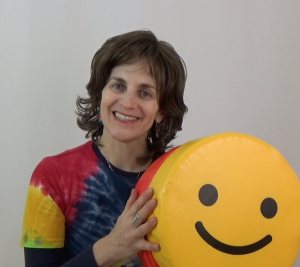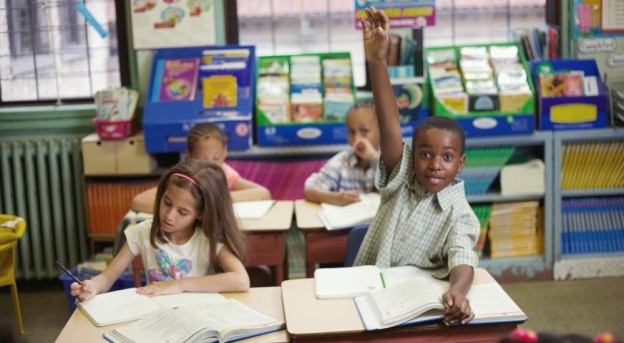
Special Education 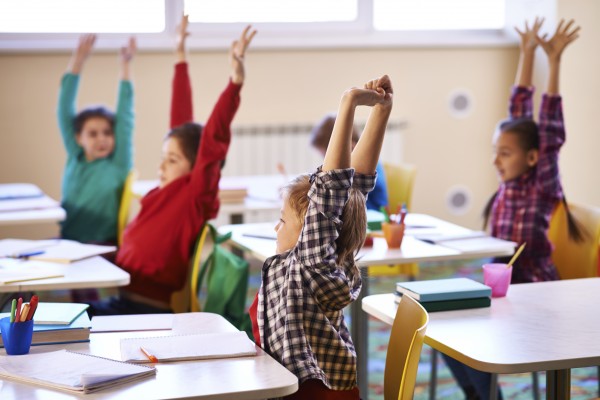 Use those chairs to help promote exercise in the classroom![/caption]
Teachers sometimes forget how useful a school chair can be. Whether your chairs have arms or not, they can be used for chair push-ups. Just have the kids push their bottoms up and down using their arms placed on the sides of their seat ten to twenty times.
Or, you can have the kids stretch using their chairs. Have them kneel in a prayer position on the floor with arms stretched out holding onto the base of the chair. Hold for 60 seconds. Kids can also do dips by lowering their hips down in front of their seat ten to twenty times. Now, learning can begin! While we are on the topic of chairs you may want to check out these seating alternatives.
Use those chairs to help promote exercise in the classroom![/caption]
Teachers sometimes forget how useful a school chair can be. Whether your chairs have arms or not, they can be used for chair push-ups. Just have the kids push their bottoms up and down using their arms placed on the sides of their seat ten to twenty times.
Or, you can have the kids stretch using their chairs. Have them kneel in a prayer position on the floor with arms stretched out holding onto the base of the chair. Hold for 60 seconds. Kids can also do dips by lowering their hips down in front of their seat ten to twenty times. Now, learning can begin! While we are on the topic of chairs you may want to check out these seating alternatives.
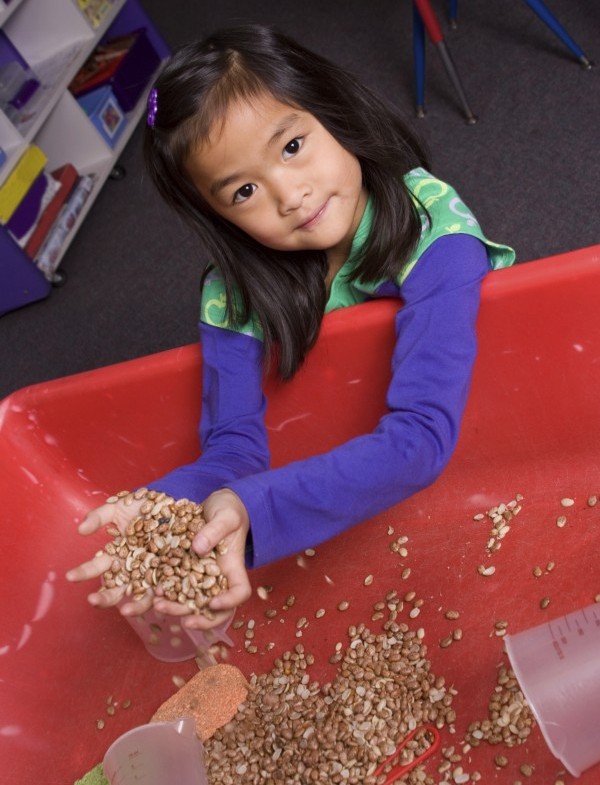 Keep those hands busy with breaks during the day with lots of items in the sensory bin.[/caption]
Make sure you have a Break Box or sensory bin available for movement and sensory breaks. You can use your box to hold various items that provide a sensory outlet.
Your box can be used as a reward or just when a break is needed. Items can be easily replaced or used over and over again. This is a favorite among classroom teachers.
Keep those hands busy with breaks during the day with lots of items in the sensory bin.[/caption]
Make sure you have a Break Box or sensory bin available for movement and sensory breaks. You can use your box to hold various items that provide a sensory outlet.
Your box can be used as a reward or just when a break is needed. Items can be easily replaced or used over and over again. This is a favorite among classroom teachers.
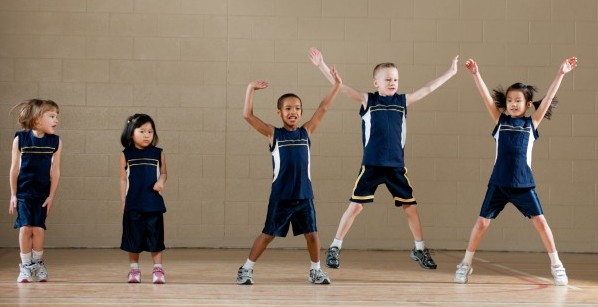 Jumping jacks are a great way to expel pent up energy that needs to be released during the school day.[/caption]
Jumping is great and for some kids. Keeping a jumping board or mini trampoline in the back of your classroom may be a great solution, but if you don’t have one, you can take Jumping Jack breaks.
This is great for motor planning, coordination and blood flow to the brain.
Jumping jacks are a great way to expel pent up energy that needs to be released during the school day.[/caption]
Jumping is great and for some kids. Keeping a jumping board or mini trampoline in the back of your classroom may be a great solution, but if you don’t have one, you can take Jumping Jack breaks.
This is great for motor planning, coordination and blood flow to the brain.
 Doesn't have to be a ball or anything big, eye-hand coordination can be achieved through tossing around any soft items in the classroom.[/caption]
There’s nothing more engaging then using the body with the brain in an eye-hand coordination task. You can provide a scarf for each child (they don’t roll away) and have them toss and catch the scarf right at their desk before taking a test or doing busy desk work.
Have the kids clap between catching or turn around and catch. Better yet, toss with the right hand and catch with the left and then switch. This will help with crossing midline and prepare them for reading and writing.
Doesn't have to be a ball or anything big, eye-hand coordination can be achieved through tossing around any soft items in the classroom.[/caption]
There’s nothing more engaging then using the body with the brain in an eye-hand coordination task. You can provide a scarf for each child (they don’t roll away) and have them toss and catch the scarf right at their desk before taking a test or doing busy desk work.
Have the kids clap between catching or turn around and catch. Better yet, toss with the right hand and catch with the left and then switch. This will help with crossing midline and prepare them for reading and writing.
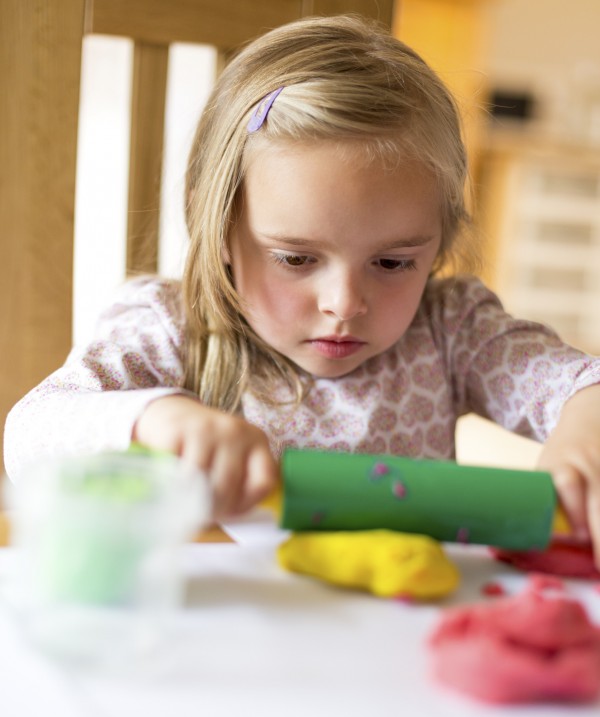 Putty or Play-Doh is a great way to get some heavy hand work into the classroom for kids.[/caption]
Need to do writing? Get their hands warmed up first. Get some putty, play dough or manipulatives to engage your kids’ hands before the busy work begins.
Squeezing, stretching and slapping down the dough can get their entire hand, forearm and upper arms energized.
Just remember that school and movement do not have to exist apart from one another. They can be used simultaneously for a most awesome outcome, engaged kids and a happy teacher!
Putty or Play-Doh is a great way to get some heavy hand work into the classroom for kids.[/caption]
Need to do writing? Get their hands warmed up first. Get some putty, play dough or manipulatives to engage your kids’ hands before the busy work begins.
Squeezing, stretching and slapping down the dough can get their entire hand, forearm and upper arms energized.
Just remember that school and movement do not have to exist apart from one another. They can be used simultaneously for a most awesome outcome, engaged kids and a happy teacher!
5 Ways to Incorporate Heavy Work into a Special Education Classroom
Back to school! Parents are delighted and kids, well, maybe not so excited. And teachers? I’m guessing most of you are ready to get back to your curriculum. As you tread back into the New Year, don’t forget to make sure everyone’s sensory system is in check. You can start by incorporating some heavy work and movement into your classroom and curriculum. Here are a few great tips to making sure your kids are moving, engaged and able to focus after settling down from their winter and holiday break.1. Chair Exercise
[caption id="attachment_21754" align="aligncenter" width="600"] Use those chairs to help promote exercise in the classroom![/caption]
Teachers sometimes forget how useful a school chair can be. Whether your chairs have arms or not, they can be used for chair push-ups. Just have the kids push their bottoms up and down using their arms placed on the sides of their seat ten to twenty times.
Or, you can have the kids stretch using their chairs. Have them kneel in a prayer position on the floor with arms stretched out holding onto the base of the chair. Hold for 60 seconds. Kids can also do dips by lowering their hips down in front of their seat ten to twenty times. Now, learning can begin! While we are on the topic of chairs you may want to check out these seating alternatives.
Use those chairs to help promote exercise in the classroom![/caption]
Teachers sometimes forget how useful a school chair can be. Whether your chairs have arms or not, they can be used for chair push-ups. Just have the kids push their bottoms up and down using their arms placed on the sides of their seat ten to twenty times.
Or, you can have the kids stretch using their chairs. Have them kneel in a prayer position on the floor with arms stretched out holding onto the base of the chair. Hold for 60 seconds. Kids can also do dips by lowering their hips down in front of their seat ten to twenty times. Now, learning can begin! While we are on the topic of chairs you may want to check out these seating alternatives.
2. Sensory Break
[caption id="attachment_21755" align="aligncenter" width="600"] Keep those hands busy with breaks during the day with lots of items in the sensory bin.[/caption]
Make sure you have a Break Box or sensory bin available for movement and sensory breaks. You can use your box to hold various items that provide a sensory outlet.
Your box can be used as a reward or just when a break is needed. Items can be easily replaced or used over and over again. This is a favorite among classroom teachers.
Keep those hands busy with breaks during the day with lots of items in the sensory bin.[/caption]
Make sure you have a Break Box or sensory bin available for movement and sensory breaks. You can use your box to hold various items that provide a sensory outlet.
Your box can be used as a reward or just when a break is needed. Items can be easily replaced or used over and over again. This is a favorite among classroom teachers.
3. Jumping Jacks
[caption id="attachment_21756" align="aligncenter" width="598"] Jumping jacks are a great way to expel pent up energy that needs to be released during the school day.[/caption]
Jumping is great and for some kids. Keeping a jumping board or mini trampoline in the back of your classroom may be a great solution, but if you don’t have one, you can take Jumping Jack breaks.
This is great for motor planning, coordination and blood flow to the brain.
Jumping jacks are a great way to expel pent up energy that needs to be released during the school day.[/caption]
Jumping is great and for some kids. Keeping a jumping board or mini trampoline in the back of your classroom may be a great solution, but if you don’t have one, you can take Jumping Jack breaks.
This is great for motor planning, coordination and blood flow to the brain.
4. Eye-Hand Coordination
[caption id="attachment_21757" align="aligncenter" width="600"] Doesn't have to be a ball or anything big, eye-hand coordination can be achieved through tossing around any soft items in the classroom.[/caption]
There’s nothing more engaging then using the body with the brain in an eye-hand coordination task. You can provide a scarf for each child (they don’t roll away) and have them toss and catch the scarf right at their desk before taking a test or doing busy desk work.
Have the kids clap between catching or turn around and catch. Better yet, toss with the right hand and catch with the left and then switch. This will help with crossing midline and prepare them for reading and writing.
Doesn't have to be a ball or anything big, eye-hand coordination can be achieved through tossing around any soft items in the classroom.[/caption]
There’s nothing more engaging then using the body with the brain in an eye-hand coordination task. You can provide a scarf for each child (they don’t roll away) and have them toss and catch the scarf right at their desk before taking a test or doing busy desk work.
Have the kids clap between catching or turn around and catch. Better yet, toss with the right hand and catch with the left and then switch. This will help with crossing midline and prepare them for reading and writing.
5. Heavy Hand Work
[caption id="attachment_21758" align="aligncenter" width="600"] Putty or Play-Doh is a great way to get some heavy hand work into the classroom for kids.[/caption]
Need to do writing? Get their hands warmed up first. Get some putty, play dough or manipulatives to engage your kids’ hands before the busy work begins.
Squeezing, stretching and slapping down the dough can get their entire hand, forearm and upper arms energized.
Just remember that school and movement do not have to exist apart from one another. They can be used simultaneously for a most awesome outcome, engaged kids and a happy teacher!
Putty or Play-Doh is a great way to get some heavy hand work into the classroom for kids.[/caption]
Need to do writing? Get their hands warmed up first. Get some putty, play dough or manipulatives to engage your kids’ hands before the busy work begins.
Squeezing, stretching and slapping down the dough can get their entire hand, forearm and upper arms energized.
Just remember that school and movement do not have to exist apart from one another. They can be used simultaneously for a most awesome outcome, engaged kids and a happy teacher! 
